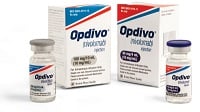Looking for an antidote to all the payer chest-thumping about cancer drug prices? Here's some news to suit pharma, at least when it comes to cancer immunotherapies. One big distinction in health insurance--between medicines patients take at home and those they receive at doctors' offices--should put a crimp in payers' efforts to squeeze out discounts on PD-1 and PD-L1 therapies.
 |
| Bernstein analyst Tim Anderson |
That's the word from Bernstein analyst Tim Anderson, who points out that payers and PBMs have had very limited control over intravenous drugs reimbursed under the medical benefit umbrella, rather than the pills and injections covered in the pharmacy benefit sphere. That's not likely to change soon, Anderson says.
"Despite the rhetoric, we see nothing tangibly on the horizon that foretells a sudden or material change to this long-standing system, as it relates to oncology drugs," the analyst wrote in a recent note to investors.
The IV drugs include heavyweights such as Roche's ($RHHBY) Avastin and Herceptin; and Johnson & Johnson's ($JNJ) Velcade. They also include Bristol-Myers Squibb's ($BMY) melanoma treatment Yervoy, a drug that's on tap for use alongside the company's PD-1 drug Opdivo. And they include other immunotherapy drugs such as Merck's ($MRK) Keytruda.
 Yes, payers have been trying various ways to control drug costs in the medical-benefit world, but so far, not much has worked. Payment bundling, for instance. Experiments with paying a flat fee to doctors to cover cancer treatment haven't panned out as expected; in fact, in a couple of recent tries, the schemes actually increased spending on drugs while lowering overall costs.
Yes, payers have been trying various ways to control drug costs in the medical-benefit world, but so far, not much has worked. Payment bundling, for instance. Experiments with paying a flat fee to doctors to cover cancer treatment haven't panned out as expected; in fact, in a couple of recent tries, the schemes actually increased spending on drugs while lowering overall costs.
Shifting costs to patients has been marginally successful, too, Anderson notes, because of out-of-pocket maximums in many health plans.
Earlier this week, Moody's Investors Service predicted that consolidation in the health-insurance field--with Aetna's ($AET) Humana ($HUM) buyout, for instance--would give the bigger players more clout in drug-price negotiations in a couple of years, once the companies have a chance to integrate their operations. Cancer drugs would be an obvious target, Moody's said, but the analysts there also pointed out the paradoxical increase in drug spending that came along with bundled payment programs.
"Experiments will continue," Anderson predicts, "but at this stage this seems to be all that they are really: experiments."
Not so much for the self-administered meds, which include biggies like Celgene's ($CELG) multiple myeloma med Revlimid and Novartis' ($NVS) leukemia giant Gleevec. Head-to-head rivals such as Johnson & Johnson's Zytiga and Takeda and Medivation's ($MDVN) Xtandi would logically be tempting targets for payers to play against each other for discounts.
Doctors might be a better leverage point when it comes to injectables, what with the American Society of Clinical Oncology proposing a cancer drug scorecard that rates therapies in their various indications, noting their cost along the way. Some oncologists have been quite vocal with their criticisms of drug pricing; one MD Anderson oncologist has taken to Twitter ($TWTR) to campaign against high treatment costs.
Special Reports: Top 15 pharma companies by 2014 revenue - Novartis - Roche - Pfizer - Merck - Bristol-Myers | Top 10 most expensive drugs of 2013 | Top 10 best-selling cancer drugs of 2013